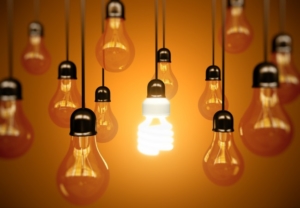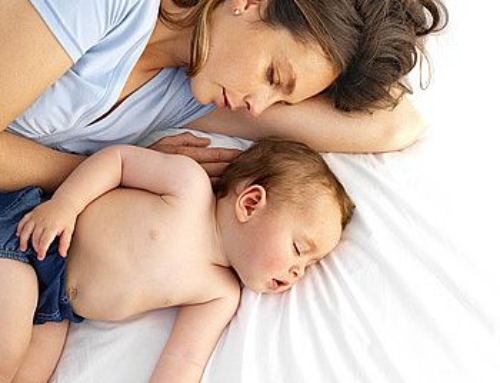 The discussion of light at bedtime is an ongoing one, for both children and adults alike. In a society dominated by technology, we take for granted that we have lights going until we flip them off, TVs running, iPads or tablets going for kids, and smart phones to browse at all hours of the day. The evidence for the negative effects of these lights on sleep is well-documented in adults
The discussion of light at bedtime is an ongoing one, for both children and adults alike. In a society dominated by technology, we take for granted that we have lights going until we flip them off, TVs running, iPads or tablets going for kids, and smart phones to browse at all hours of the day. The evidence for the negative effects of these lights on sleep is well-documented in adults
The study focused on 10 children aged 3 to 5. The children were first adapted to a set bedtime so the researchers could assess melatonin levels accurately with respect to sleep onset time. It’s worth noting that previous research on toddlers found that the average biological bedtime based on melatonin production in a dark environment is around 8:30pm[4]. Once children were regularly going to sleep at a set bedtime, the researchers came to the house and recreated this “cave-like” environment to assess melatonin at various points throughout the day. This cave-like environment mimics what we as humans have evolved with when it comes to exposure to light. After measuring this, the researchers then exposed the children to 1000 lux of light in this cave-like environment for one hour. They did this by exposing the children to a specially lighted box in their “cave” and researchers played with the kids by the box, including colouring on clear sheets on the light box, using magnetic tiles on the box, and so on. Notably, this level of illumination is far lower than the levels assessed with adults when looking at the impact of light on melatonin. For example, exposure to 10,000 lux has been associated with a 39% drop in melatonin levels in adults[2].
What did they find? Comparing individuals within the two conditions, they found there was an average 88% decrease in melatonin levels after playing for one hour in the light and levels had not returned to even 50% of baseline at 50 minutes after exposure for 7 of the 10 children. The large effect is not too surprising as researchers have known that younger children are more influenced by light given the size of their pupils, which are larger than those of adults, meaning more light enters and influences their physiology, sleep included.
What is the take-home message?
The short take-home is that we need to be really careful about light exposure in young children. The longer answer is that we may be creating more sleep problems than we know with our modern environments for babies and young kids. Although the research was small (an n of 10) and with children aged 3 to 5, there is good reason to believe that even younger children would be equally influenced as the pupil size remains larger for younger children. If we combine this research with previous research on the effects of melatonin production in toddlers on their bedtime and the quality of their overnight sleep[4], we can see that lights may not just disrupt the falling asleep process, but also how well our kids sleep at night.
I want to caution here that infants, toddlers, and preschool children will still commonly wake at night like us adults do. This idea that they should be sleeping 11-12 hours without anything to eat or drink may naturally hold for some children, but is not something we should be pushing for those who don’t naturally ascribe to it. What the research does tell us is that when children go to sleep at a time when their melatonin levels are not where they should be, their overnight sleep is disrupted and they wake more than when they fall asleep with appropriate melatonin levels.
What are the limitations of the research?
Primarily, the light level. To better understand the amount of light being tested, 1000 lux is equivalent to being inside by a window on a clear day. If you were outside on a clear day, it would be approximately 10,000 lux. In contrast, a cloudy day offers about 100 lux and houses are suggested to be lit at around 150 lux, an office is generally lit at 500 lux, and public places like grocery stores are lit at around 750 lux. Our electronic devises often offer somewhere between 30 and 100 lux. Of course, it’s still not this simple as there are a variety of factors that influence the effect of lux on us humans, such as our proximity to the light, the duration in which we are exposed to it, and the wave of light (e.g., blue waves are known to disrupt melatonin levels more than any other kind of light wave). Thus, the current study used a very high level of lighting which would not be expected to be what children are regularly exposed to at night (though in summer, it may be somewhat closer). Luckily, the researchers are funded to look at varying levels of light in children to determine at what point we see an effect so hopefully this research comes sooner rather than later.
Second, the small sample size; however, the fact that the effect was so large suggests that although the actual effect may vary and be less than 88%, it likely is still significant. In certain fields of research, the expectation is that you need to have a small sample size because the effects should be so robust you don’t need a large sample to get them. This is important as often small samples are immediately dismissed, but there’s more to it than that. For example, a small sample size when there is no effect tells us absolutely nothing because a small sample size can only identify very large effects and so no significance doesn’t mean there’s nothing there, just that the effect isn’t huge. A small sample size with a strong effect is more likely to reflect something real, especially when the outcome variable is biological in nature and thought to be the same across sexes. So in this case, the fact that a hormone was being measured means that it’s unlikely that the strong effect is the product of the measure used or another characteristic of the children in the study. That said, of course this needs to be replicated and hopefully extended to younger children.
What are the practical things parents can do to avoid this issue?
The first thing is to be cognizant of all the different ways in which light is present in your home. For some of us, it’s the natural light that comes during the summer in the later months and we need to find ways to minimize at a certain point. For some, it’s the amount of lights we use in the house. Or the TV. Or the gadgets that emit blue wave lights. Regardless, chances are almost all of us could benefit from a good hard look at the amount of light we have in our houses.
To fix this, consider the following, depending on what your light issues are:
- Invest in good blinds that can minimize the natural light that comes in during the summer months
- Buy a lamp for each room that has different settings of light so you can turn off all other lights and slowly dim that light as the night progresses
- Get some red/orange light bulbs for some lamps that you can turn on come evening time
With respect to electronic use, it is definitely best to keep electronics off for the 90 or so minutes before bedtime. I have met parents who say this one act has had a profound impact on their child. It’s not unreasonable to expect different children to react differently to light and for some, this could be a game-changer. Furthermore, there is a free app called f-lux which filters out blue light which, as mentioned above, is known to negatively impact melatonin production. This means if you are using lights, the lux would be low enough to have a minimal impact and without the blue lights, the effect may be small on sleep. Of course, there are other reasons to limit electronics such as the stimulating effect, but if you aren’t worried about that then this would be an avenue to explore.
_______________________
[1] Duffy JF, Wright KP Jr. Entrainment of the human circadian system by light. J Biol Rhythms 2005; 20: 326–38. [2] Chang AM, Santhi N, St Hilaire M, Gronfier C, Bradstreet DS, Duffy JF, et al. Human responses to bright light of different durations. J. Physiol. 2012; 590: 3103–12. [3] Akacem LD, Wright KP, LeBourgeois MK. Sensitivity of the circadian system to evening bright light in preschool-age children. Physiological Reports 2018; 6: e13617 DOI: 10.14814/phy2.13617 [4] LeBourgeois MK, Carskadon MA, Akacem LD, Simpkin CT, Wright KP Jr, Achermann P, et al. Circadian phase and its relationship to nighttime sleep in toddlers. J Biol Rhythms 2013; 28: 322–31.





I have been wanting to switch to red/orange bulbs in some of our lights – particularly for our nightlights. Do you have any suggestions of ones you have used and would recommend? Thanks!
Where do you live?